Chris Bumstead, often referred to as “CBum,” has become synonymous with the Classic Physique division in bodybuilding. With five Mr. Olympia titles under his belt, the 29-year-old Canadian has been a dominant force in the sport, showcasing a physique that blends size, symmetry, and aesthetics—attributes that have made him nearly untouchable in the eyes of judges and fans alike.
However, as Bumstead looks to extend his reign, he faces a unique challenge: the very structure of the Classic Physique division itself limits his ability to build more muscle.
The Rise of Chris Bumstead
Chris Bumstead’s journey to the top of the Classic Physique division has been nothing short of remarkable.
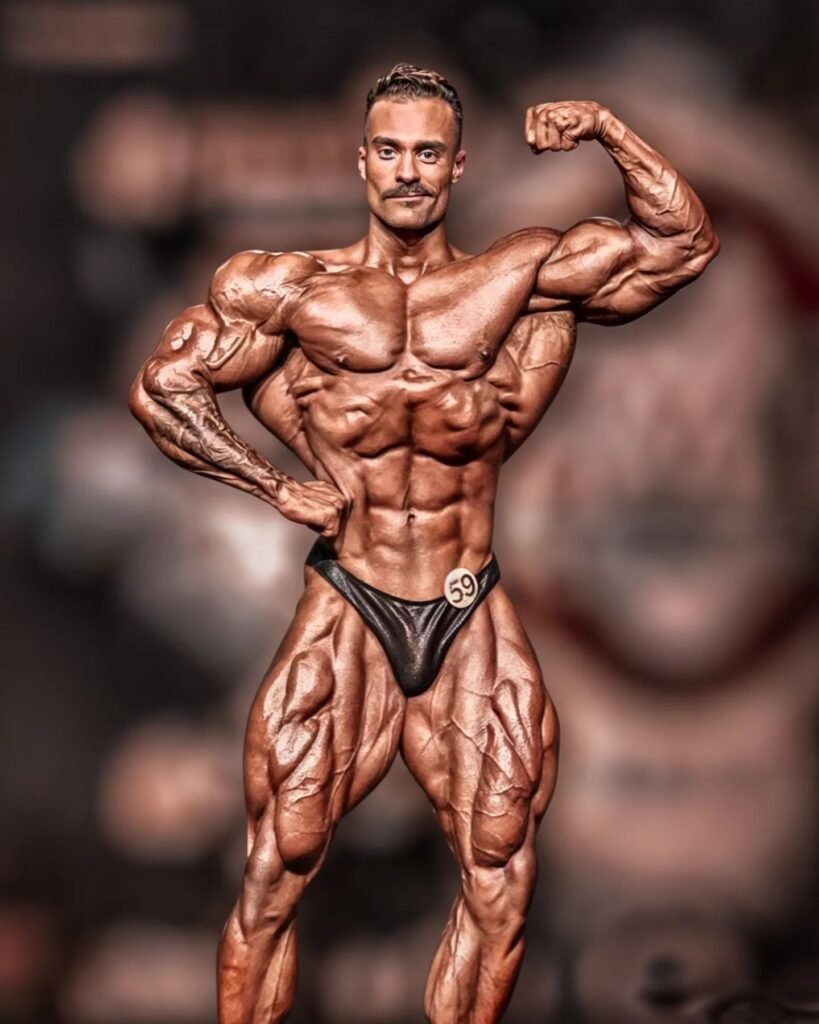
Since his Olympia debut in 2017, he has steadily climbed the ranks, dethroning Breon Ansley in 2019 to capture his first title.
Over the next four years, Bumstead solidified his position as the face of Classic Physique, winning the Olympia with scores so low they bordered on perfection.
His victory in 2019 with a seven-point scorecard, and subsequent wins with similarly low scores, highlighted his dominance in a division that values proportion, flow, and aesthetic appeal over sheer mass.
Yet, as Chris Bumstead continued to collect Olympia titles, a looming problem became increasingly apparent: his potential for muscle growth is capped by the very rules of the division that has made him a superstar.
Related: Is Chris Bumstead Natural? An In-Depth Exploration
Understanding the Classic Physique Weight Cap
Unlike the Men’s Open division, where competitors like Derek Lunsford and Big Ramy can pack on as much muscle as possible without concern for weight limits, the Classic Physique division imposes strict weight caps based on height.
These caps are designed to preserve the classic bodybuilding look, emphasizing symmetry and aesthetics over mass.
According to IFBB Pro League rules, the weight limit for competitors varies depending on their height. For example, athletes who are 5’9” are capped at 204 pounds, while those who stand 6’1” can weigh up to 234 pounds.
Chris Bumstead, who is officially listed at 6’1” but measures slightly taller during competition weigh-ins, is currently capped at 241 pounds due to a small height discrepancy.
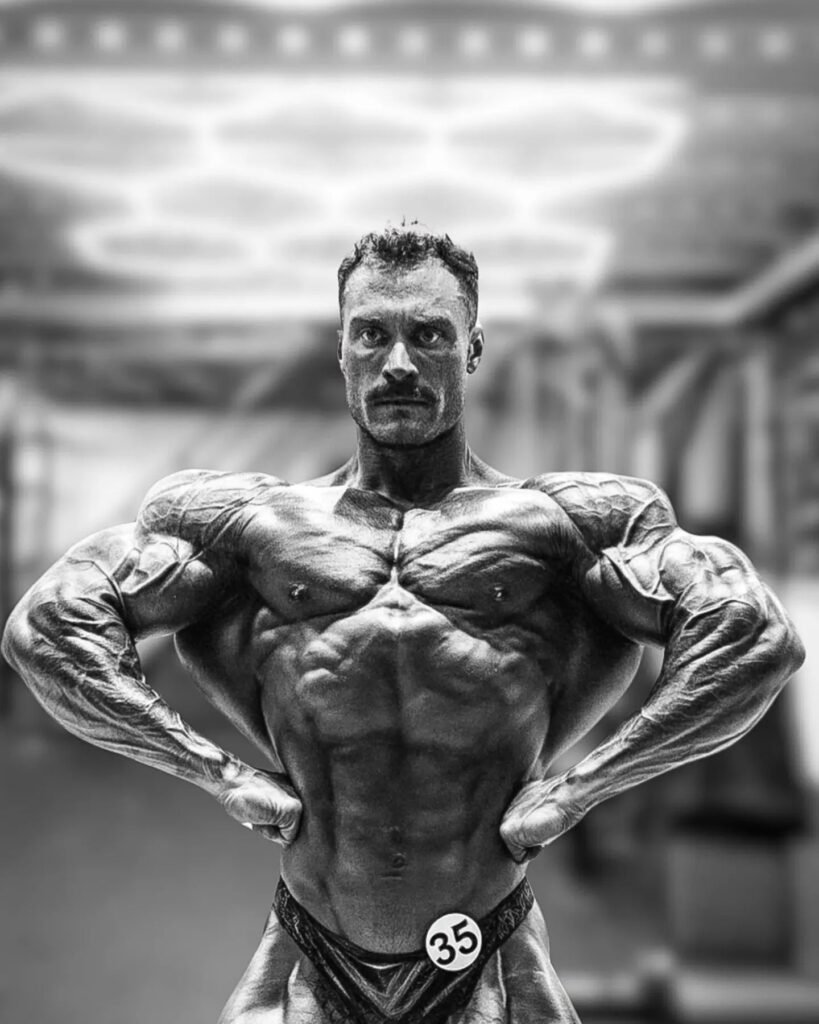
This weight limit poses a significant challenge for Chris Bumstead as he approaches the upper threshold of what his body can carry within the division’s regulations.
In simpler terms, Bumstead’s problem is that he is already close to the maximum amount of muscle he can have without “weighing out” of Classic Physique and being forced to compete in another division, like Men’s Open, where the competition is stiffer, and the standards are different.
The Impact of Weight Limits on Muscle Growth
The weight cap in Classic Physique is not just a number; it fundamentally influences how athletes like Bumstead train and prepare for competition.
In a recent interview, Chris Bumstead joked about the division being “a battle to be taller,” as a few extra inches would allow him to compete with more muscle mass.
However, since growing taller is not an option, Chris Bumstead has to find other ways to stay competitive while adhering to the division’s rules.
During the 2023 Olympia, Chris Bumstead tipped the scales at 241 pounds, just one pound below the maximum allowed for his height category.
This close proximity to the weight limit means that any additional muscle mass he gains would push him over the cap, making him ineligible to compete in Classic Physique.
This is not just a theoretical issue—Chris Bumstead has to carefully monitor his off-season weight and meticulously plan his training to avoid exceeding the limit.
Related: Chris Bumstead Discusses His Diet and Reaffirms Retirement Stance
The Challenge of Maintaining Dominance
While the weight cap restricts Chris Bumstead’s ability to build more muscle, it doesn’t mean he can simply coast on his existing physique.
The competition in Classic Physique is intensifying, with several up-and-coming athletes nipping at Chris Bumstead’s heels.
Ramon “Dino” Rocha Queiroz and Urs Kalecinski have both made significant strides in recent years, reducing the gap between themselves and Bumstead.
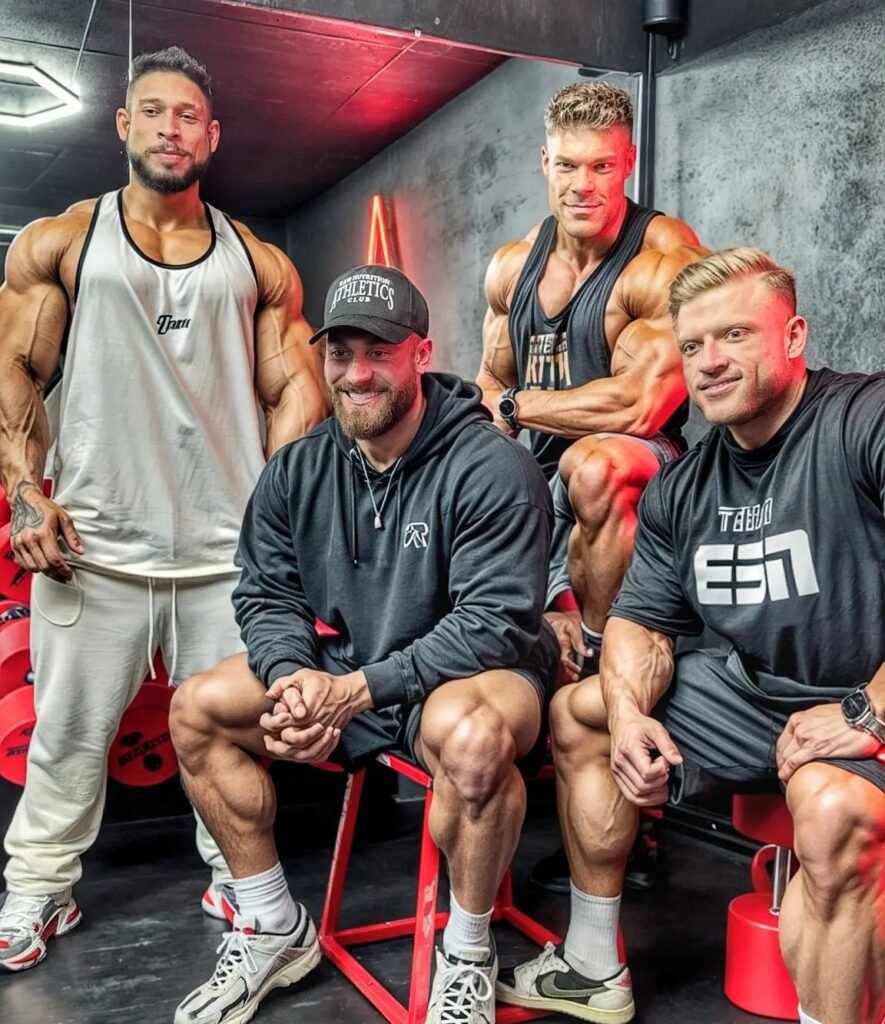
Queiroz, in particular, has cut his Olympia score from 23 points in 2021 to just 10 in 2023, placing second behind Bumstead for two consecutive years.
Similarly, Wesley Vissers, who once was not considered a serious threat, has emerged as a formidable competitor after winning the 2024 Arnold Classic with an impressive seven-point scorecard, reminiscent of Bumstead’s own debut victory.
These competitors are hungry and closing in on Bumstead, making it clear that maintaining his dominance will require more than just resting on his laurels.
Strategic Adjustments in Training
With the weight cap limiting his ability to grow, Chris Bumstead’s off-season strategy becomes crucial. Instead of focusing on overall mass gain, Chris Bumstead, under the guidance of his coach Hany Rambod, must adopt a more nuanced approach.
Bodybuilding experts, like Dr. Eric Helms, suggest that Chris Bumstead’s training will likely focus on making targeted, muscle-specific improvements rather than pursuing broad increases in size.
This means honing in on smaller muscles or addressing weak points that may not have been a priority in the past.
For Chris Bumstead, the goal is to fine-tune his already world-class physique, ensuring that every muscle group is in perfect proportion and that his conditioning is sharper than ever.
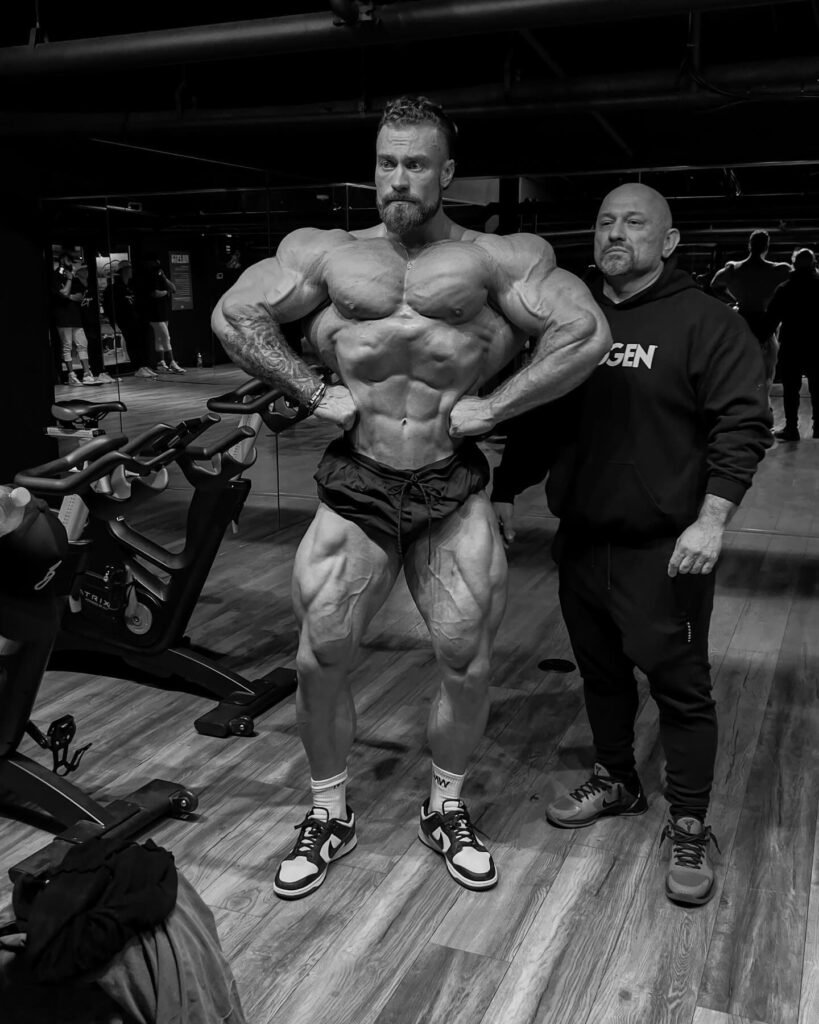
This approach not only helps him stay within the weight limit but also ensures that his physique remains balanced and aesthetically pleasing—key factors in the Classic Physique division.
Dr. Ryan Girts, an Exercise Physiology PhD and competitive bodybuilder, echoes this sentiment, emphasizing the importance of addressing weak points or training smaller muscle groups.
In a division where more isn’t always better, underdeveloped or overdeveloped body parts can both be detrimental.
Chris Bumstead’s challenge is to use a scalpel, not a sledgehammer, in his training—refining his physique with precision rather than piling on indiscriminate mass.
Related: Chris Bumstead Height, Weight, Age, Body Measurements, Olympia Journey and Bodybuilding Career
The Role of Conditioning
In addition to targeted muscle development, conditioning will play a critical role in Bumstead’s continued success.
As Dr. Helms points out, Chris Bumstead will likely need to push the limits of conditioning to maintain his edge over the competition.
This involves not only reducing body fat but also managing water retention and other factors that can influence his stage appearance.
As Chris Bumstead’s competitors improve, the margin for error becomes slimmer. Every detail matters, from the sharpness of his abs to the fullness of his muscles on stage.
Chris Bumstead has already proven he can win titles with injuries—he famously secured his 2022 Olympia win despite a torn lat and biceps—but as the competition closes in, his room for maneuvering narrows.
The Future of Chris Bumstead
At 29, Chris Bumstead is still relatively young by bodybuilding standards, with many top athletes peaking in their early to mid-30s.
However, Chris Bumstead has also hinted that his days in competitive bodybuilding may be numbered.
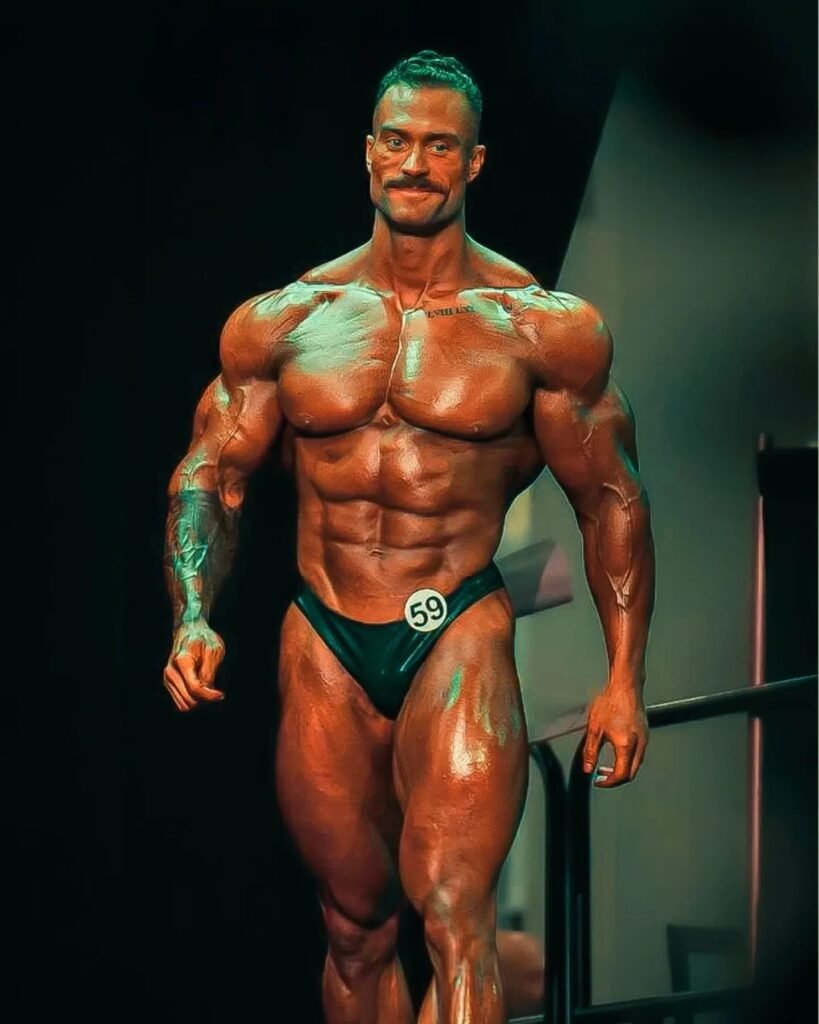
He has expressed interest in retiring after turning 30, citing his desire to focus on other aspects of life, including his business ventures and family.
Additionally, Bumstead’s ongoing battle with Berger disease, a condition that affects the kidneys, could also influence his decision to step away from the sport.
Despite these challenges, Chris Bumstead remains the undisputed king of Classic Physique for now. His grip on the division is firm, but the competition is closer than ever.
As he prepares for the 2024 Olympia, Bumstead will need to rely on his experience, strategic training, and unparalleled conditioning to stay ahead of the pack.
Related: Chris Bumstead Diet Plan and Workout Routine
Conclusion
Chris Bumstead’s inability to build more muscle is not a sign of weakness but a testament to the unique challenges of the Classic Physique division.
His status as the reigning champion is underpinned by a careful balance of size, symmetry, and conditioning—factors that he must continue to refine without crossing the weight threshold that defines his category.
As the 2024 Olympia approaches, all eyes will be on Bumstead to see if he can once again rise to the occasion and defend his title.
With nearly 25 million followers and an indelible mark on the sport, Chris Bumstead’s legacy is secure, even if the future holds new challenges.
The road ahead may be steep, but for Chris Bumstead, the view from the top remains unparalleled.